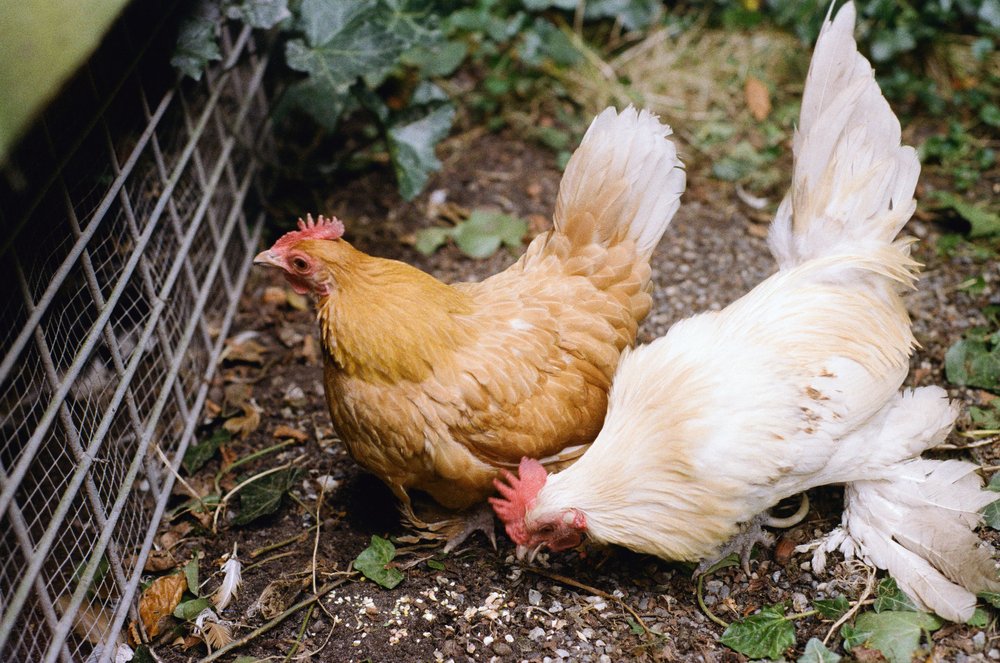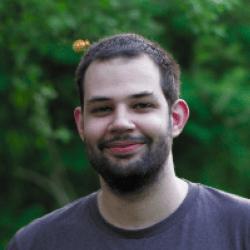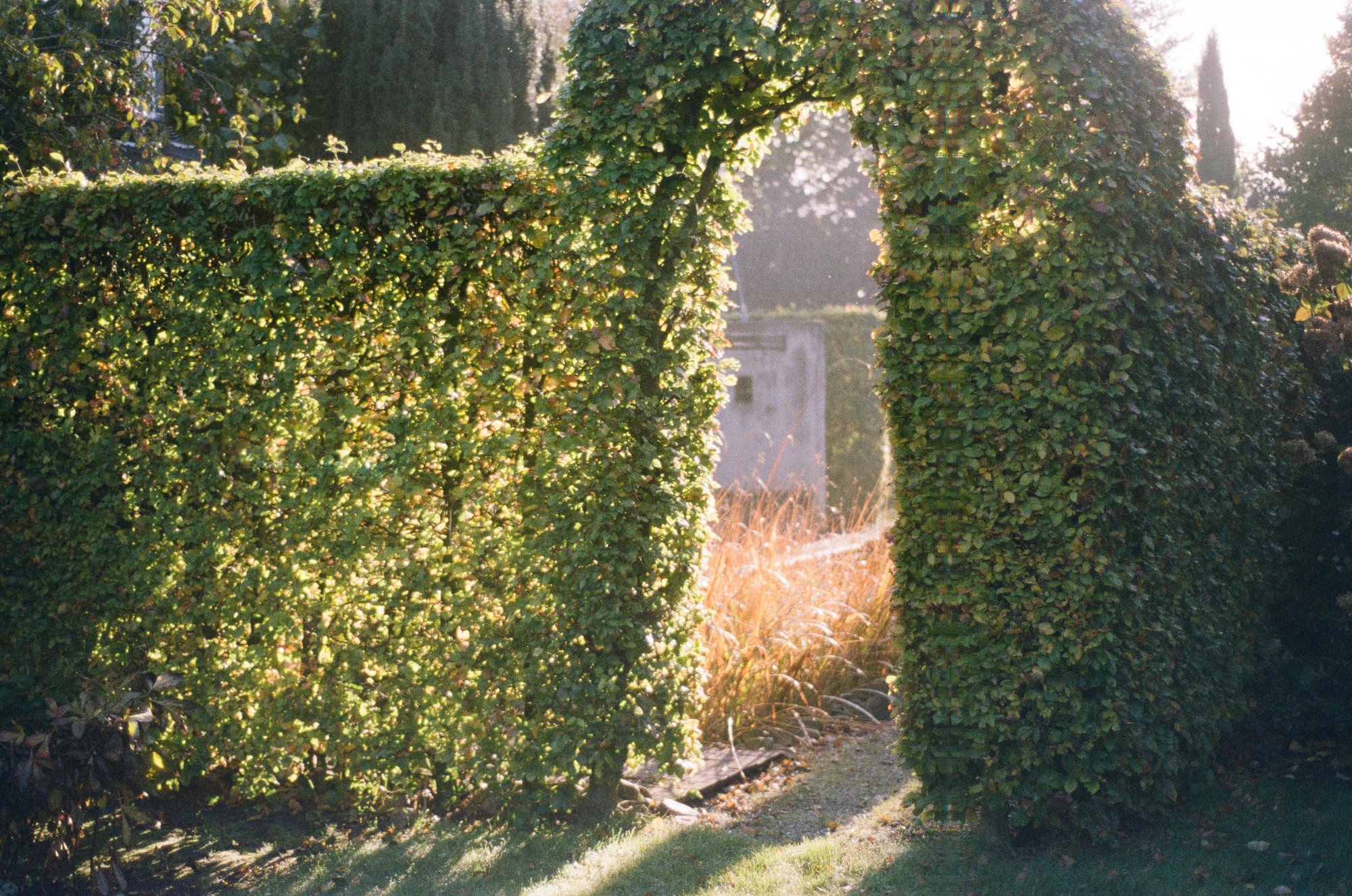I've never really been that interested in taking pictures on film. My first camera was digital and digital seems superior in every way. I can take as much pictures as I want, they're instantly ready and can be reviewed on the camera itself. Also one of the major upsides is that pictures are basically free.
There's one thing that's not really cheap though on digital, larger sensor sizes. And with larger I mean full-frame 35mm and up. All my digital cameras are APS-C (~60% smaller than full frame) or below. This works absolutely great but there's some benefits to having a larger sensor sizes. Here's a comparison between the sensor size of a phone and a digital camera:



This is a comparison between a Pixel 2 and a DSLR. The larger sensor of the DSLR camera makes it possible to have natural blurry backgrounds. The larger the sensor the blurrier the background can be, and this also changes the distance at what you can make a picture of something and still have a blurry background. This is why portrait photography usually easily has a blurry background but landscape photography doesn't. It's in the combination of the sensor size, distance to the subject and the aperture size of the lens.
Smartphone cameras are a great example of sensor size since the size difference between a professional camera and a phone camera is in the order of 10x smaller. In the pictures above you can see that the phone picture on the left still has a lot of detail in the background, this is only the natural background blur from the lens/sensor in the phone. The middle picture is taken with the same phone in "portrait photography" mode. This uses AI magic to try to emulate the look of a professional camera with a large sensor with a lot of artifacts like inconsistent blurring on the background, and no blurring in reflections. The picture on the right is taken with the largest sensor camera I have, which is the APS-C size, resulting in a nice smooth background blur.

It's possible to get a great APS-C sensor size digital camera for ~300 euro. But as soon as you go up in sensor size you're up into 1000+ euro. The price increases even more for going above 35mm full frame, a medium format camera will be starting at 3000 euro. This is all excluding lenses.
For me the reason for getting into analog photography is twofold. Instead of paying thousands of euros for a larger sensor digital camera I can just get a old second hand film camera since the 35mm full frame size I want is based on the size of a normal analog film roll. This brings the price down to below 50 euro for the camera.
The second reason is that I got sent a blank 35mm film roll, which was the nudge I needed to get the camera and get into the ecosystem.

The next part of this journey is figuring out which camera to get. Thanks to practically everyone having moved to digital photography it's very easy to find old analog cameras for as low as 15 euro. An example for this would be a Nikon Nikomat, since I already have Nikon F-mount lenses it would be an obvious choice.
Instead of going for the cheapest option I decided to go for a Nikon F90 instead. This is the newest most featureful film camera by Nikon I could find for a reasonable price. I found the F90 for 49 euro ex. shipping. There's newer models but those were more scarce and the price jumps up to 1000 euro again, I guess they have some collectors value I don't really care about.
The main reason for picking this specific camera over a fully mechanical one is that getting into analog photography is scary when picking a fully mechanical/manual one. I get only 36 shots, no feedback until I took all the shots and the quickest way to get annoyed by doing analog photography would be getting the first developed film roll back full with out of focus and under/over exposed pictures. The F90 gives me all the manual options and has compatability with autofocus on most of my existing lenses, but it also has a full-auto point and shoot mode.
This camera is also able to detect quite a list of faults with the film feeding and having the film roll correctly inserted which helps calm my nerves about everything working smoothly when taking pictures.
I'm quite happy with this how this decision turned out. I'll probably also get one of the older mechanical cameras next now that I have slightly more experience.
The first developed pictures
Since this is color film and I did not want to buy a lot of tools and chemicals I sent of my film to be developed at a lab and scanned. There's multiple options to get that done. The "old" way in the Netherlands would be to go to a supermarket and have someone put it in one of the large developing machines and have some nice prints an hour later. Before that it was done by getting a special envelope at the supermarket, several supermarket chains had these, and putting the film roll in it and noting on the envelope which size you would like the photos printed at.

After sending off the envelope to a lab you'd retrieve another envelope with developed film strips, 4 or 5 pictures per strip, and instructions for ordering re-prints from specific frame numbers at different sizes or multiple copies. To actually get those prints you'd have to give back the film strips again to get them printed ofcourse. A lot of back and forth to get some pictures developed.

This process later got modernized a bit, giving the possibility to order a photo CD instead of prints. This service is still offered to this day by some supermarket chains but it seems like this never got modernized again in the last 20 years.
I can't get over how stupid this is. Someone is still running a full lab to develop film and scan it, and they still make picture CDs but for some reason when you order a CD which can hold 700 MB they only give compressed downscaled jpeg pictures. And with compressed I mean they could've delivered the full film roll on a 1.44MB floppy.
This made me opt to get the film roll scanned by an actual physical photography store (they still exist!), asking to just email me the highest quality original scans.
I got sent edited jpegs instead :(
The pictures

This is the first picture on my first film roll. Well... actually the first one I intended to take. The first one is a blurry picture of my desk because I accidentally pressed the shutter release button directly after loading the film roll. I took this with a Nikkor 50mm 1:1.8D lens, the only actual full frame compatible lens I own.
I'm pretty happy how this one turned out, I took it on the automatic mode and it's suprisingly non-blurry for how much the chickens moved around. The amount of film grain is more than I expected, but it looks pretty nice.
Another picture I like quite a lot is this one:

It's not a particularly interesting scene, except that it looks like this picture was taken 30 years ago. The film gives it an immediate vintage feel, combined with the street being unusually empty due to corona restrictions.
One interesting thing is that the nice green trees were not green at all when taking this picture, this is taken in fall and the trees were very brightly yellow with a bunch of brown trees in between.
There's also the glaring scanning artifact in the center of the frame, this seemed to have happened on quite a lot of the pictures.
Since I couldn't find a picture hosting system I liked and also could save metadata about analog film photography, I made my own. Here's a gallery of some of the other pictures from this film roll: https://pictures.brixit.nl/album/b6f2d1af-441d-466d-a788-e98b5ad9a174
The next roll of film
While having a lot of fun shooting on this first roll of film I ordered a box of filmrolls so I can continue shooting. Since my parents always used Fujifilm rolls back when everyone took pictures this way I decided to also try a Fujifilm roll next. I found the Fujicolor Pro 400H which seemed great, it had everything. The green box, the "pro" in the name. I made a slight mistake while reading the product page though.

I've accidentally ordered some 120 medium format film instead of the 135 film I wanted. So it seems the way forward now is getting one of the 15 euro medium format film cameras.
Medium format film is something I know even less about. The idea seems simple, make the film frame way larger for more detail. It seems like the vast majority of medium format cameras have fixed focus lenses though. The film scans I've seen online taken through such cameras make it look like there's way less detail than my 35mm film pictures though. The alternative is getting one of the medium format SLRs with an actual focusable lens but those are again ridiculously overpriced for a box with a hole for a lens in it. The reason for that is pretty simple: They are Hasselblad cameras so I'm paying the price for a collectors item. There's also a few alternative cameras that are pretty similar to the Hasselblad but they are also very overpriced.
Anyway, I got a roll of Fujifilm Superia X-tra 400 after that from a nice physical photography store. It's still in my camera and almost full. Can't wait to see how it turns out!


